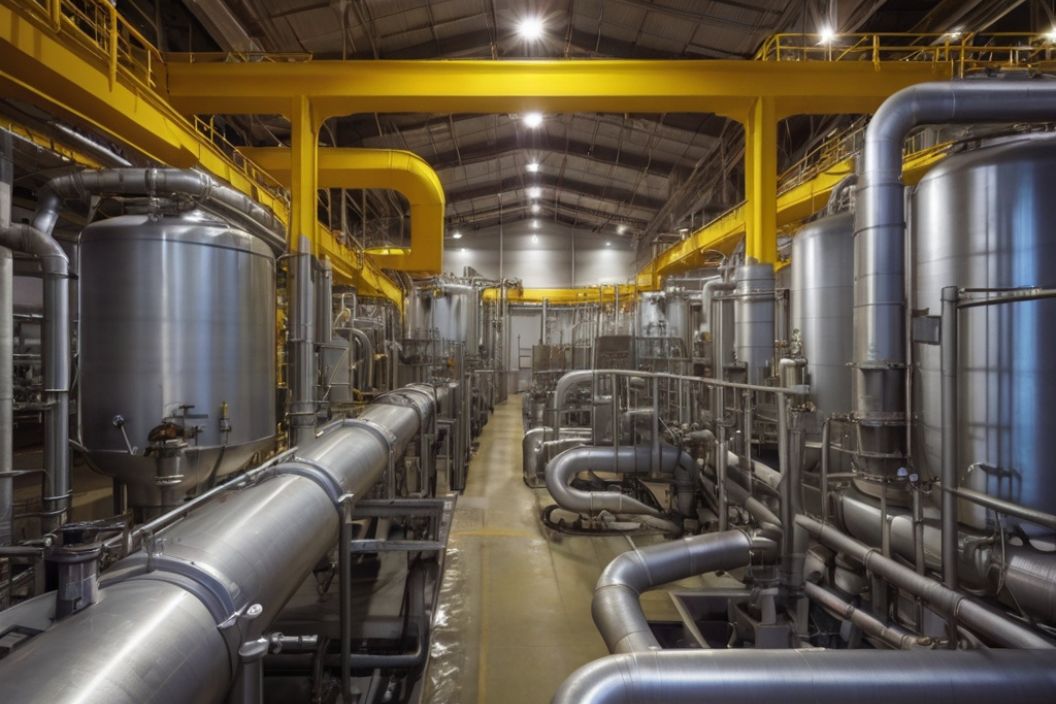The chemical process industry (CPI) is one of the most energy-intensive sectors, accounting for a significant portion of global energy consumption. As the demand for chemical products continues to rise, improving energy efficiency and implementing conservation measures are critical for reducing operational costs, minimizing environmental impact, and enhancing sustainability. In this blog, we’ll explore the importance of energy efficiency in chemical processing, key strategies for achieving it, and the latest innovations driving the industry towards a greener future.
The Importance of Energy Efficiency in Chemical Processing
Energy efficiency in chemical processing is vital for several reasons:
- Cost Reduction: Energy costs constitute a substantial part of the operational expenses in chemical plants. Improving energy efficiency can significantly reduce these costs, enhancing profitability.
- Environmental Impact: The chemical industry is a major source of greenhouse gas emissions. By optimizing energy use, the industry can lower its carbon footprint and contribute to global efforts to combat climate change.
- Regulatory Compliance: Governments worldwide are implementing stricter regulations on energy consumption and emissions. Adopting energy-efficient practices helps companies comply with these regulations.
- Sustainability Goals: Many companies have set ambitious sustainability targets. Improving energy efficiency is a crucial step towards achieving these goals and demonstrating corporate social responsibility.
Key Strategies for Energy Efficiency in Chemical Processing
Achieving energy efficiency in chemical processing involves a combination of technological advancements, process optimization, and best practices. Here are some key strategies:
1. Process Optimization
Optimizing chemical processes can lead to significant energy savings. This includes:
- Process Integration: Integrating multiple processes to maximize energy recovery and minimize energy losses. For example, using heat exchangers to transfer heat from one process to another.
- Process Intensification: Redesigning processes to make them more efficient and compact, reducing energy consumption. This can involve using smaller reactors, higher pressures, or more efficient catalysts.
- Advanced Process Control: Implementing real-time monitoring and control systems to optimize process conditions and minimize energy use.
2. Energy Recovery and Reuse
Recovering and reusing energy within a chemical plant is an effective way to improve energy efficiency. Key techniques include:
- Heat Recovery Systems: Using heat exchangers, heat pumps, and other technologies to capture waste heat from one process and use it in another.
- Combined Heat and Power (CHP): Generating electricity and useful heat simultaneously from the same energy source, improving overall efficiency.
- Regenerative Thermal Oxidizers (RTOs): Using the heat from the combustion of waste gases to preheat incoming gases, reducing the need for additional fuel.
3. Efficient Equipment and Technologies
Investing in energy-efficient equipment and technologies can lead to substantial energy savings. Examples include:
- High-Efficiency Boilers and Furnaces: Using modern, high-efficiency boilers and furnaces that consume less fuel and produce fewer emissions.
- Variable Frequency Drives (VFDs): Installing VFDs on motors to adjust their speed and reduce energy consumption.
- Advanced Separation Technologies: Implementing energy-efficient separation processes, such as membrane filtration or advanced distillation techniques, to reduce energy use.
4. Renewable Energy Integration
Integrating renewable energy sources into chemical processing can further enhance energy efficiency and sustainability. This includes:
- Solar Energy: Using solar panels to generate electricity or solar thermal systems to provide process heat.
- Wind Energy: Installing wind turbines to supply electricity for plant operations.
- Biomass Energy: Using biomass as a renewable feedstock or fuel source, reducing dependence on fossil fuels.
5. Energy Management Systems
Implementing comprehensive energy management systems helps monitor, control, and optimize energy use across the entire facility. Key components include:
- Energy Audits: Conducting regular energy audits to identify areas for improvement and track progress over time.
- Energy Monitoring and Reporting: Using advanced metering and reporting systems to track energy consumption and identify inefficiencies.
- Employee Training and Engagement: Educating employees about energy efficiency and involving them in energy-saving initiatives.
Innovations Driving Energy Efficiency in the CPI
The CPI is continually evolving, with new innovations driving significant improvements in energy efficiency. Some of the latest advancements include:
1. Digitalization and Industry 4.0
The digital transformation of the CPI, often referred to as Industry 4.0, is enabling new levels of energy efficiency. Key technologies include:
- Internet of Things (IoT): Using IoT sensors to collect real-time data on energy use and process conditions, enabling more precise control and optimization.
- Big Data Analytics: Analyzing large datasets to identify patterns and opportunities for energy savings.
- Artificial Intelligence (AI): Implementing AI algorithms to predict energy demand, optimize process conditions, and detect inefficiencies.
2. Advanced Catalysts
Developing more efficient catalysts can significantly reduce the energy required for chemical reactions. Recent advancements include:
- Nanocatalysts: Using nanotechnology to create catalysts with higher surface area and activity.
- Biocatalysts: Employing enzymes and other biological catalysts to carry out reactions at lower temperatures and pressures.
3. Energy Storage Solutions
Energy storage technologies are crucial for integrating renewable energy sources and ensuring a stable energy supply. Key developments include:
- Battery Storage: Using advanced batteries to store excess renewable energy for use during peak demand.
- Thermal Energy Storage: Storing heat generated from renewable sources or waste heat for later use in process heating.
Key Takeaways
Energy efficiency and conservation are essential for the chemical process industry to reduce costs, minimize environmental impact, and enhance sustainability. By adopting process optimization, energy recovery, efficient equipment, renewable energy integration, and comprehensive energy management systems, the CPI can achieve significant energy savings. Furthermore, innovations in digitalization, advanced catalysts, and energy storage are driving the industry towards a more sustainable future.
As the chemical process industry continues to innovate and adopt energy-efficient practices, it will play a crucial role in addressing global energy challenges and fostering a more sustainable future. By prioritizing energy efficiency and conservation, the CPI can not only enhance its operational efficiency but also contribute to the broader goal of environmental sustainability.

